
 |
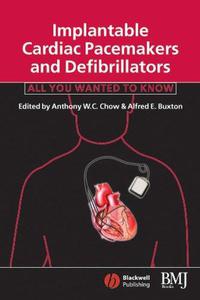 Implantable Cardiac Pacemakers and Defibrillators: All You Wanted to Know By 2006 | 181 Pages | ISBN: 0727915665 | PDF | 3 MB Pacing and ICDs are used increasingly in the management of arrhythmias and a number of different cardiac conditions. Specialists, general cardiologists and general physicians are now closely involved in managing patients with these devices. Implantable Cardiac Pacemakers and Defibrillators: All you wanted to know is written by leading specialists from the UK and USA and is designed for all physicians looking for a clear and comprehensive introduction to the principles and functions of these devices. The focus of this book has been on the indications for these devices and continuing patient management for the generalist and those in training - including complications and troubleshooting that arise peri- and post-implantation. Not only does Implantable Cardiac Pacemakers and Defibrillators provide a sound introduction to the subject, in the later chapters it goes beyond the basics, introducing more advanced techniques such as lead extraction. It can be used both for those in training and for those with direct patient care responsibilities.With its up to date, evidence-based approach and inclusion of the latest AHA guidelines on pacing, this is an ideal guide to a major aspect of modern cardiac management.Content: Chapter 1 Basic Principles of Pacing (pages 1-28): Malcolm KirkChapter 2 Temporary Cardiac Pacing (pages 29-52): Oliver R. Segal, Vias Markides, D. Wyn Davies and Nicholas S. PetersChapter 3 Pacemaker Implantation and Indications (pages 53-69): Aneesh V. Tolat and Peter J. ZimetbaumChapter 4 The ICD and How it Works (pages 70-80): Henry F. Clemo and Kenneth A. EllenbogenChapter 5 Indications for the Implanted Cardioverter?Defibrillator (pages 81-96): Alfred E. BuxtonChapter 6 ICD Follow?Up: Complications, Troubleshooting, and Emergencies Related to ICDs (pages 97-109): Kristin E. EllisonChapter 7 Pacing Therapies for Heart Failure (pages 110-133): Rebecca E. Lane, Martin R. Cowie and Anthony W. C. ChowChapter 8 Pacing in Special Cases: Hypertrophic Cardiomyopathy, Congenital Heart Disease (pages 134-150): Martin Lowe and Fiona WalkerChapter 9 Lead Problems, Device Infections, and Lead Extraction (pages 151-169): Richard Schilling and Simon Sporton  Jeff Ashton, Lisa Pulitzer, "Imperfect Justice: Prosecuting Casey Anthony" English | 2011 | ISBN: 006212532X | EPUB | pages: 336 | 1.8 mb Jeff Ashton was part of the prosecution team in the Florida homicide trial of Casey Anthony, the single mother accused of murdering her little girl, Caylee. The most sensational courtroom drama since the infamous O.J. Simpson affair, the Casey Anthony trial had people coast-to-coast riveted. In his stunning true crime masterwork, Imperfect Justice, Ashton gives a fascinating and impassioned insider's account of the investigation, the trial, and the acquittal that shocked the nation, and makes a powerful case as to why allowing Anthony to walk free was a devastating travesty of justice. 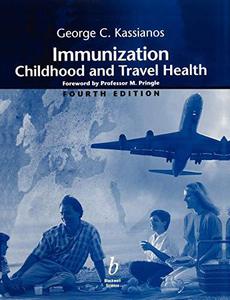 Immunization: Childhood and Travel Health, Fourth Edition By George C. Kassianos(auth.) 2001 | 432 Pages | ISBN: 0632055812 | PDF | 16 MB Immunization: Childhood and Travel Health provides an all-encompassing reference for all those working in primary care, secondary care paediatric wards, immunization centres and travel clinics, as well as medical students and candidates working for higher examinations. The Fourth Edition has been comprehensively updated and the travel section completely revised. The book gives a thorough introduction to the history of immunization, vaccine technology and immunology, and compares international schedules of routine immunizations. Each vaccine is then presented separately, including contraindications, local and general side and adverse effects, administration advice, special precautions and notes, vaccine availability, storage, and well-referenced comments on issues surrounding each vaccine, including controversies. A description of the infection caused by the relevant microorganisms follows, together with data on disease notifications and immunization coverage. A considerable number of maps illustrate endemicity of diseases.One section is dedicated to issues relevant to primary care such as immunization fees and targets, audit, electronic recall systems, patient group directions and issues surrounding the immunization work of the practice nurse. The Fourth Edition includes an extensive section on travel health, which includes the latest travel statistics, travel clinics, detailed advice to travellers and legal issues that may arise. A considerable amount of information is included on air travel, contraindications to travel, and high altitude sickness. Specific information is given on advising travellers at risk because of pre-existing conditions, and how to best deal with the returned traveller. Advice is provided for each disease, including malaria, which is covered in detail.The last section contains information on notifiable diseases, reciprocal healthcare agreements, contact numbers for Embassies and High Commissions in London, a world travel advice checklist, and an extensive list of sources of travel information with contact address.Content: Chapter 1 History of Immunization (pages 3-7): Chapter 2 Timescale of Vaccine Introduction in the UK (page 8): Chapter 3 Immunology, Immunization and Vaccine Development (pages 9-20): Chapter 4 The Cold Chain and Vaccine Storage (pages 21-22): Chapter 5 Transmission of Infection (page 23): Chapter 6 Infectivity and Exclusion Period of Infections (page 24): Chapter 7 Immunization in Practice (pages 25-29): Chapter 8 Expanded Programme on Immunization (pages 30-36): Chapter 9 Vaccine Damage Payment Scheme (page 37): Chapter 10 Information Sheet for Parents (pages 38-40): Chapter 11 Viral and Bacterial Vaccines (page 41): Chapter 12 Special Precautions for All Vaccines (pages 42-43): Chapter 13 Special Precautions for Live Vaccines (pages 44-45): Chapter 14 Treating Anaphylaxis (pages 46-47): Chapter 15 Complications of Infectious Diseases and Vaccines: An Aide?Memoire (pages 51-53): Chapter 16 Diphtheria/Tetanus/Pertussis (DTP) Combined and Diphtheria/Tetanus (DT, Td) Combined (pages 54-56): Chapter 17 Diphtheria (pages 57-60): Chapter 18 Tetanus (pages 61-64): Chapter 19 Pertussis (pages 65-75): Chapter 20 Haemophilus influenzae b (pages 76-80): Chapter 21 Poliomyelitis (pages 81-87): Chapter 22 Measles/Mumps/Rubella Combined Vaccine (pages 88-99): Chapter 23 Measles (pages 100-103): Chapter 24 Mumps (pages 104-106): Chapter 25 Rubella (pages 107-111): Chapter 26 Meningococcal Infection (pages 112-121): Chapter 27 Tuberculosis (pages 122-132): Chapter 28 Anthrax (pages 135-136): Chapter 29 Cholera (pages 137-140): Chapter 30 Hepatitis A (pages 141-150): Chapter 31 Hepatitis A and Typhoid Combined Vaccine (pages 151-152): Chapter 32 Hepatitis B (pages 153-176): Chapter 33 Hepatitis A and B Combined Vaccine (pages 177-179): Chapter 34 Influenza (pages 180-192): Chapter 35 Japanese B Encephalitis (pages 193-196): Chapter 36 Plague (pages 197-198): Chapter 37 Pneumococcal Infection (pages 199-205): Chapter 38 Rabies (pages 206-214): Chapter 39 Tick?2 Encephalitis (pages 215-219): Chapter 40 Typhoid (pages 220-225): Chapter 41 Varicella (pages 226-230): Chapter 42 Yellow Fever (pages 231-235): Chapter 43 Immunization Fees and the UK GP (pages 239-247): Chapter 44 Immunization and Audit (pages 248-251): Chapter 45 Electronic Recall Systems for Completion of Immunization (pages 252-260): Chapter 46 The Practice Nurse and Immunization (pages 261-266): Chapter 47 Practice Nurse: Pre?Vaccination Checklist (pages 267-268): Chapter 48 Introduction to Travel Health (pages 271-275): Chapter 49 Travel Clinics (pages 276-279): Chapter 50 Advice to Travellers (pages 280-290): Chapter 51 Legal Aspects of Advice for Travellers (pages 291-292): Chapter 52 Air Travel (pages 293-304): Chapter 53 Tunnel Travel (page 305): Chapter 54 Motion Sickness (pages 306-307): Chapter 55 Sea Cruises (page 308): Chapter 56 High Altitude Sickness (pages 309-310): Chapter 57 Travellers at Risk (pages 311-329): Chapter 58 The Returned Traveller (pages 330-363): Chapter 59 Malaria (pages 364-388): Chapter 60 International Society of Travel Medicine (page 391): Chapter 61 Specimen Immunization Exemption Certificate (page 392): Chapter 62 Notifiable Diseases (pages 393-394): Chapter 63 Reciprocal Healthcare Agreements Between the UK and Other Non?EEA Countries (pages 395-398): Chapter 64 Sources of Travel Information: Useful Addresses/Telephone Numbers/Websites (pages 399-411): Chapter 65 Embassies and High Commissions in London (pages 412-414): Chapter 66 World Travel Advice Checklist (pages 415-421): Chapter 67 Travel Vaccines Administration Summary (pages 422-423): 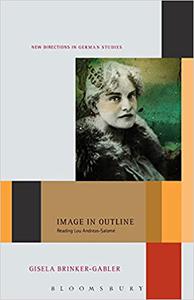 Gisela Brinker-Gabler, Imke Meyer, "Image in Outline: Reading Lou Andreas-Salomé" English | 2012 | pages: 172 | ISBN: 1441199756, 1628920173 | PDF | 2,1 mb Image in Outline introduces the reader to Lou Andreas-Salomé's significant engagement with  Illumination Engineering: Design with Nonimaging Optics By R. John Koshel (Editor) 2013 | 316 Pages | ISBN: 0470911409 | PDF | 16 MB This book brings together experts in the field who present material on a number of important and growing topics including lighting, displays, solar concentrators. The first chapter provides an overview of the field of nonimagin and illumination optics. Included in this chapter are terminology, units, definitions, and descriptions of the optical components used in illumination systems. The next two chapters provide material within the theoretical domain, including etendue, etendue squeezing, and the skew invariant. The remaining chapters focus on growing applications. 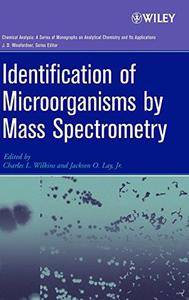 Identification of Microorganisms by Mass Spectrometry, Volume 169 By J. D. Winefordner(eds.) 2006 | 365 Pages | ISBN: 0471654426 | PDF | 6 MB A multidisciplinary approach to understanding the fundamentals of mass spectrometry for bacterial analysis From chemotaxonomy to characterization of targeted proteins, Identification of Microorganisms by Mass Spectrometry provides an overview of both well-established and cutting-edge mass spectrometry techniques for identifying microorganisms. A vital tool for microbiologists, health professionals, and analytical chemists, the text is designed to help scientists select the most effective techniques for use in biomedical, biochemical, pharmaceutical, and bioterror defense applications. Since microbiological applications of mass spectrometry require a basic understanding of both microbiology and analytical chemistry, the editors have incorporated material from both disciplines so that readers from either field will come to understand the necessary principles of the other. Featuring contributions from some of the most recognized experts in both fields, this volume provides specific examples of fundamental methods as well as approaches developed in the last decade, including: * Metastable atom bombardment pyrolysis mass spectrometry * Matrix-assisted laser desorption/ionization mass spectrometry (MALDI) * MALDI time-of-flight mass spectrometry (MALDI-TOF MS) of intact bacteria * High-resolution Fourier transform mass spectrometry (FTMS) * Electrospray ionization (ESI) mass spectrometry Identification of Microorganisms by Mass Spectrometry represents the most comprehensive and up-to-date work on the topic currently available. It is liberally illustrated with figures and tables and covers every aspect of spectrometric identification of microorganisms, including experimental procedures, various means of sample preparation, data analysis, and interpretation of complex mass spectral data.Content: Chapter 1 Cultural, Serological, and Genetic Methods for Identification of Bacteria (pages 1-21): John B. Sutherland and Fatemeh RafiiChapter 2 Mass Spectrometry: Identification and Biodetection, Lessons Learned and Future Developments (pages 23-37): Alvin FoxChapter 3 An Introduction to MALDI?TOF MS (pages 39-60): Rohana Liyanage and Jackson O. LayChapter 4 The Development of the Block II Chemical Biological Mass Spectrometer (pages 61-89): Wayne H. Griest and Stephen A. LammertChapter 5 Method Reproducibility and Spectral Library Assembly for Rapid Bacterial Characterization by Metastable Atom Bombardment Pyrolysis Mass Spectrometry (pages 91-124): Jon G. Wilkes, Gary Miertschin, Todd Eschler, Les Hosey, Fatemeh Rafii, Larry Rushing, Dan A. Buzatu and Michel J. BertrandChapter 6 MALDI?TOF Mass Spectrometry of Intact Bacteria (pages 125-152): Jackson O. Lay and Rohana LiyanageChapter 7 Development of Spectral Pattern?Matching Approaches to Matrix?Assisted Laser Desorption/Ionization Time?of?Flight Mass Spectrometry for Bacterial Identification (pages 153-160): Kristin H. Jarman and Karen L. WahlChapter 8 Studies of Malaria by Mass Spectrometry (pages 161-180): Plamen A. DemirevChapter 9 Bacterial Strain Differentiation by Mass Spectrometry (pages 181-201): Randy J. Arnold, Jonathan A. Karty and James P. ReillyChapter 10 Bacterial Protein Biomarker Discovery: A Focused Approach to Developing Molecular?Based Identification Systems (pages 203-227): Tracie L. Williams, Steven R. Monday and Steven M. MusserChapter 11 High?Throughput Microbial Characterizations Using Electrospray Ionization Mass Spectrometry and Its Role in Functional Genomics (pages 229-256): Seetharaman Vaidyanathan and Royston GoodacreChapter 12 Bioinformatics for Flexibility, Reliability, and Mixture Analysis of Intact Microorganisms (pages 257-277): Catherine Fenselau and Patrick PribilChapter 13 MALDI?FTMS of Whole?Cell Bacteria (pages 279-300): Jeffrey J. Jones, Michael J. Stump and Charles L. WilkinsChapter 14 A Review of Antibody Capture and Bacteriophage Amplification in Connection with the Direct Analysis of Whole?Cell Bacteria by MALDI?TOF MS (pages 301-318): Kent J. Voorhees and Jon C. ReesChapter 15 Discrimination and Identification of Microorganisms by Pyrolysis Mass Spectrometry: From Burning Ambitions to Cooling Embers-A Historical Perspective (pages 319-343): Eadaoin Timmins and Royston Goodacre  Ideas of Landscape By Matthew Johnson(auth.) 2006 | 263 Pages | ISBN: 1405101598 | PDF | 7 MB Ideas of Landscape discusses the current theory and practice of landscape archaeology and offers an alternative agenda for landscape archaeology that maps more closely onto the established empirical strengths of landscape study and has more contemporary relevance.The first historical assessment of a critical period in archaeology Takes as its focus the so-called English landscape tradition -- the ideological underpinnings of which come from English Romanticism, via the influence of the "father of landscape history": W. G. Hoskins Argues that the strengths and weaknesses of landscape archaeology can be traced back to the underlying theoretical discontents of Romanticism Offers an alternative agenda for landscape archaeology that maps more closely onto the established empirical strengths of landscape study and has more contemporary relevance Content: Chapter One Introduction (pages 1-17): Chapter Two Lonely as a Cloud (pages 18-33): Chapter Three A Good Pair of Boots (pages 34-69): Chapter Four The Loss of Innocence (pages 70-118): Chapter Five Landscape Archaeology Today (pages 119-161): Chapter Six The Politics of Landscape (pages 162-192): Chapter Seven Conclusion (pages 193-202):  Ice Sheets, Sea Level and the Dynamic Earth By 2002 | 308 Pages | ISBN: 0875905315 | PDF | 12 MB Published by the American Geophysical Union as part of the Geodynamics Series.In this monograph, we present recent progress in geophysical modeling and observational tools related to the process of glacial isostatic adjustment (GIA). Rather than a retrospective view, however, we have been led by one over arching mission: to gather significant contributions that present the state-of-the-art in the field and beyond, just as it is being reshaped by new space-geodetic technologies. In this light, the monograph includes discussion on new progress in a number of long-standing problems: the modeling of the Earth's viscoelastic response; the prediction and analysis of sea-level changes and anomalies in the Earth's rotation and gravity field; and the inference of mantle viscosity. Such contributions are complemented by papers that focus on results obtained by GPS and constraints expected from impending satellite missions, as well as predictions of geophysical observables (e.g., present-day 3-D deformations, gravity signals and fault instability) related to these efforts. In these many applications it is important to understand recent progress in GIA research and the limitations that currently impact that research.Content:  Hypoglycaemia in Clinical Diabetes, Second Edition By 2007 | 349 Pages | ISBN: 0470018445 | PDF | 9 MB Hypoglycaemia, leading to confusion and impaired consciousness, is one of the most feared complications of diabetes.Hypoglycaemia in Clinical Diabetes, Second Edition explains the situations in which it arises and how to manage patients to minimize its occurrence. Fully revised and updated, the Second Edition of this practical book addresses all aspects of the clinical management of hypoglycaemia. Features new chapters on hypoglycaemia in Type 2 diabetes, the elderly and nocturnal occurrence, as well as prevention and blood glucose monitoring for detection of hypoglycaemia Edited by two diabetologists with strong international reputations who have made significant contributions to our understanding of hypoglycaemia Hypoglycaemia in Clinical Diabetes, Second Edition is an invaluable reference source for professionals caring for people with diabetes. The book is relevant for all clinicians who treat type 1 diabetes or type 2 diabetes. Praise for the First Edition:"I can strongly recommend this excellent book to all clinicians managing care for diabetic persons in everyday practice...." DIABETOLOGIA "...is extremely comprehensive, well written... highly recommended for those practising clinical diabetes." BRITISH JOURNAL OF CARDIOLOGY "A fascinating book; essential reading for those who feel they need a greater understanding of the subject." DIETETICS TODAYContent: Chapter 1 Normal Glucose Metabolism and Responses to Hypoglycaemia (pages 1-24): Ian A. Macdonald and Dr. Paromita KingChapter 2 Symptoms of Hypoglycaemia and Effects on Mental Performance and Emotions (pages 25-48): Ian J. DearyChapter 3 Frequency, Causes and Risk Factors for Hypoglycaemia in Type 1 Diabetes (pages 49-81): Dr. Mark W. J. StrachanChapter 4 Nocturnal Hypoglycaemia (pages 83-99): Simon R. HellerChapter 5 Moderators, Monitoring and Management of Hypoglycaemia (pages 101-120): Dr. Tristan Richardson and Dr. David KerrChapter 6 Counterregulatory Deficiencies in Diabetes (pages 121-140): Dr. David Kerr and Dr. Tristan RichardsonChapter 7 Impaired Awareness of Hypoglycaemia (pages 141-170): Brian M. FrierChapter 8 Risks of Strict Glycaemic Control (pages 171-189): Stephanie A. AmielChapter 9 Hypoglycaemia in Children with Diabetes (pages 191-215): Dr. Krystyna A. MatykaChapter 10 Hypoglycaemia in Pregnancy (pages 217-237): Dr. Ann E. Gold and Dr. Donald W. M. PearsonChapter 11 Hypoglycaemia in Type 2 Diabetes and in Elderly People (pages 239-264): Dr. Nicola N. Zammitt and Brian M. FrierChapter 12 Mortality, Cardiovascular Morbidity and Possible Effects of Hypoglycaemia on Diabetic Complications (pages 265-283): Dr. Miles Fisher and Simon R. HellerChapter 13 Long?Term Effects of Hypoglycaemia on Cognitive Function and the Brain in Diabetes (pages 285-307): Dr. Petros Perros and Ian J. DearyChapter 14 Living with Hypoglycaemia (pages 309-332): Brian M. Frier
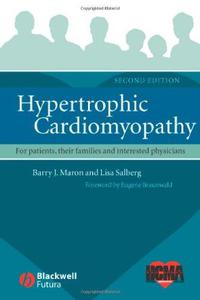 Hypertrophic Cardiomyopathy: For Patients, Their Families and Interested Physicians, Second Edition By 2006 | 134 Pages | ISBN: 1405147105 | PDF | 5 MB When there is a diagnosis of HCM in a family, this complete, easy-to-read guide is your essential resource for finding the answers to your many questions. In clear and straightforward language, it explains what hypertrophic cardiomyopathy is, what the symptoms are, and how it can be treated, as well as reviewing the genetic implications and offering candid lifestyle advice.Drawing on the expertise of Dr. Barry Maron, an internationally recognized authority on HCM, the book addresses major questions and concerns of both patients and families. Fully revised to reflect the latest developments, Hypertrophic Cardiomyopathy: For patients, their families and interested physicians, Second Edition, is a valuable source of straightforward advice and dependable information for everyone who is affected by HCM.Content: Chapter 1 What is Hypertrophic Cardiomyopathy (HCM)? (pages 1-2): Chapter 2 Historical Perspective and Names (pages 3-4): Chapter 3 How Common is HCM? (pages 5-7): Chapter 4 What is the Cause of HCM? (pages 7-10): Chapter 5 Heart Structure in HCM (pages 10-18): Chapter 6 When Does HCM Develop?: HCM in Infants and Children (pages 18-19): Chapter 7 Gender and Race (page 20): Chapter 8 What are the Symptoms of HCM? (pages 20-21): Chapter 9 How is HCM Diagnosed and What Tests are Used? (pages 22-26): Chapter 10 Other Investigations That May be Useful (pages 26-28): Chapter 11 General Outlook For Patients with HCM (pages 28-30): Chapter 12 Complications of HCM (pages 30-36): Chapter 13 Special Considerations: Athletes and Sports Activities (pages 37-40): Chapter 14 Treatments for HCM (pages 40-54): Chapter 15 Is a Cure Available? (pages 55-56): Chapter 16 Family Screening (pages 56-60): Chapter 17 What About Having Children?: Pregnancy and Delivery (pages 60-61): Chapter 18 Routine Medical Care (pages 61-62): Chapter 19 General Lifestyle Advice (pages 62-77): Chapter 20 Support and Advocacy Groups (pages 77-80): Chapter 21 What Research is Being Conducted? (page 81): Chapter 22 The 34 Most Frequently Asked Questions by Patients About HCM, as Addressed to the HCMA (pages 82-91): |